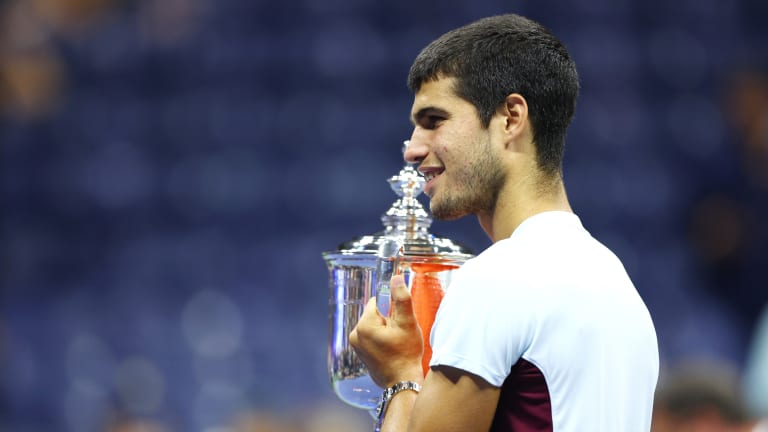Facts & Stats
10 incredible things Carlos Alcaraz achieved by winning the US Open
By Sep 17, 2022Facts & Stats
Most prize money in 2025: Aryna Sabalenka breaks single-season WTA record
By Dec 05, 2025Facts & Stats
Most wins in 2025: Carlos Alcaraz dominates leaderboard with sparkling 71-9 record
By Dec 04, 2025Facts & Stats
Biggest ranking jumps in 2025: Amanda Anisimova makes biggest leap into Top 10
By Dec 03, 2025Facts & Stats
Most titles in 2025: Carlos Alcaraz joins exclusive list with eight trophies this year
By Dec 02, 2025Facts & Stats
Most aces in 2025: Elena Rybakina becomes first woman in nine years to surpass 500 aces
By Dec 01, 2025Facts & Stats
10 sensational things Jannik Sinner achieved by winning this year's ATP Finals in Turin
By Nov 20, 2025Facts & Stats
Roger Federer is headed to the International Tennis Hall of Fame: 26 stats for his 2026 induction
By Nov 19, 2025Facts & Stats
Generational Rivalry: Jannik Sinner, Carlos Alcaraz head into 2026 after playing for four of five biggest titles
By Nov 16, 2025Facts & Stats
Carlos Alcaraz and Jannik Sinner's blockbuster final clash at the ATP Finals: 10 things to know
By Nov 16, 202510 incredible things Carlos Alcaraz achieved by winning the US Open
A day after becoming the first man born in the 2000s to win a Grand Slam title, he became the first teenager to reach No. 1 in ATP rankings history.
Published Sep 17, 2022
Advertising

Alcaraz's win over Ruud in the US Open final was his tour-leading ninth Top 10 win of the year. He's now 9-4 against the elite in 2022.
© 2022 Getty Images